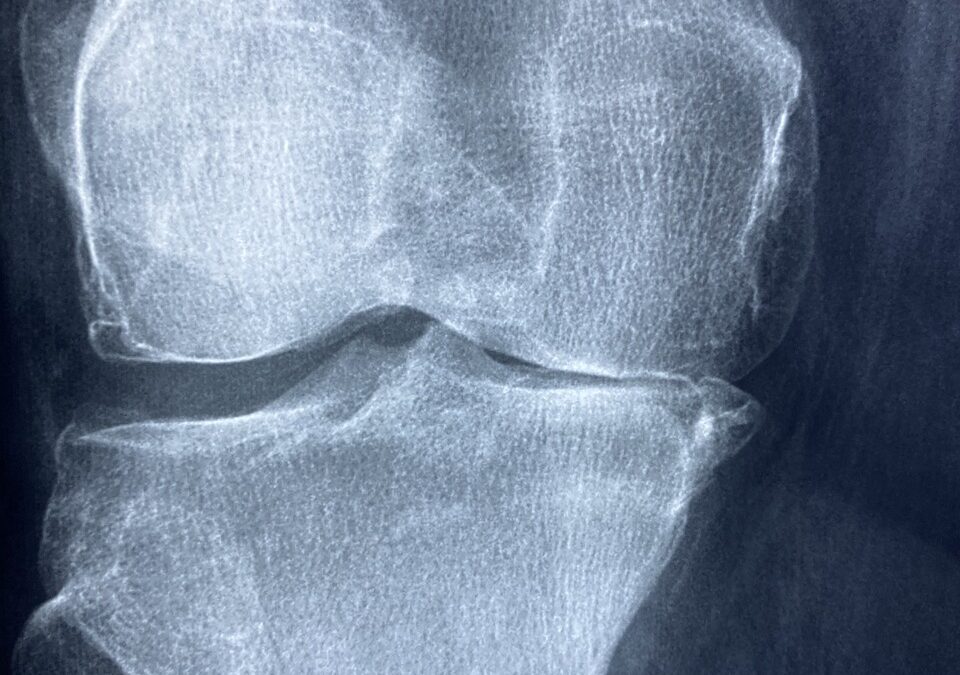Microfracture surgery is becoming a more popular option of orthopaedic surgeons in the management of arthritic changes to our joints. This blogs looks to explore: what microfracture surgery is, what is the evidence behind micro fracture surgery, who’s appropriate for microfracture surgery then we explore the recover times and likely outcomes of microfracture surgery.
What is Microfracture surgery
Microfracture surgery is a minimally invasive surgical procedure used to treat small areas of damaged cartilage in the knee joint. The procedure involves making small holes, or microfractures, in the bone underneath the damaged cartilage. The microfractures stimulate the body’s natural healing process, prompting the formation of new cartilage to fill in the damaged area.

During the surgery, the surgeon uses a specialized tool to create tiny holes in the bone. The procedure can be done arthroscopically (key hole), which means that the surgeon makes a small incision and inserts a camera and other surgical tools through the incision to perform the surgery. Recovery time is usually shorter than for more invasive surgeries, and most patients are able to resume normal activities within a few months. However, the success rate of microfracture surgery depends on a number of factors, including the size and location of the damaged area, the patient’s age and overall health, and the extent of the rehabilitation program after surgery.
What is the evidence of Microfracture surgery
Microfracture surgery has been studied extensively and has been shown to be effective in treating small areas of cartilage damage in the knee. Several clinical studies have demonstrated that microfracture surgery can relieve pain, improve knee function, and promote the growth of new cartilage in the damaged area.
One study published in the American Journal of Sports Medicine in 2014 found that patients who underwent microfracture surgery had significant improvements in pain, knee function, and quality of life at 2 years after surgery. Another study published in the same journal in 2019 showed that microfracture surgery was an effective treatment for cartilage injuries in the knee in young athletes, with over 80% of patients reporting good to excellent outcomes at an average of 6.5 years after surgery.
What joints are appropriate for microfracture surgery
Microfracture surgery is primarily used to treat small areas of cartilage damage in weight-bearing joints such as the knee, ankle, and hip. It can also be used to treat cartilage damage in non-weight bearing joints such as the shoulder.
In the knee, microfracture surgery is typically used to treat focal cartilage lesions that are less than 2 cm in size. These lesions are often caused by traumatic injury or wear and tear, and can lead to pain, swelling, and loss of function in the knee.
In the ankle, microfracture surgery can be used to treat cartilage lesions on the talar dome, which is the top of the ankle bone that articulates with the lower leg bones. These lesions can be caused by ankle sprains or other traumatic injuries, and can cause pain, swelling, and limited range of motion in the ankle.
In the hip, microfracture surgery can be used to treat cartilage damage on the femoral head or acetabulum, which are the two bones that make up the hip joint. These lesions can be caused by traumatic injury or degenerative joint disease, and can lead to pain, stiffness, and reduced mobility in the hip.
What are likely recovery times from micro fracture surgery
Recovery times from microfracture surgery can vary depending on several factors, including the size and location of the damaged area, the patient’s age and overall health, and the extent of the rehabilitation program after surgery. In general, patients can expect a recovery time of several months to a year or more.
During the initial recovery period, patients are typically advised to rest and keep weight off the affected joint to allow for proper healing. Patients may need to use crutches or other assistive devices for a period of time after surgery. Physical therapy is an important part of the recovery process and can help to improve range of motion, strength, and function in the affected joint.
In the knee, patients may need to wear a brace or use a continuous passive motion (CPM) machine to help with range of motion and prevent stiffness. The rehabilitation program may also include exercises to strengthen the surrounding muscles and improve balance and stability.
 Recovery times can vary depending on the joint that was treated. For example, recovery times after microfracture surgery in the ankle or hip may be longer than those in the knee, as these joints bear more weight and have less range of motion.
Recovery times can vary depending on the joint that was treated. For example, recovery times after microfracture surgery in the ankle or hip may be longer than those in the knee, as these joints bear more weight and have less range of motion.
It is important for patients to follow their surgeon’s instructions and rehabilitation program closely to ensure the best possible outcome and minimize the risk of complications.
What are the likely outcomes following micro fracture surgery
The outcomes following microfracture surgery can vary depending on several factors, including the size and location of the damaged area, the patient’s age and overall health, and the extent of the rehabilitation program after surgery. In general, the surgery is considered successful if it relieves pain, improves function, and promotes the growth of new cartilage in the affected joint.

Several clinical studies have shown that microfracture surgery can be effective in treating small areas of cartilage damage in the knee, ankle, and hip. Patients typically experience a significant reduction in pain and improvement in function after the procedure. However, the long-term outcomes of microfracture surgery can vary, with some patients experiencing a gradual decline in function and development of osteoarthritis over time.
The success of the surgery depends on several factors, including the size and location of the damaged area, the patient’s age and overall health, and the extent of the rehabilitation program after surgery. Patients who follow their surgeon’s instructions closely and participate in a comprehensive rehabilitation program are more likely to have successful outcomes.
When would you know if microfracture surgery is required
Microfracture surgery may be recommended if a patient has a small area of cartilage damage in a weight-bearing joint, such as the knee, ankle, or hip, that is causing pain, swelling, and/or reduced function. This type of cartilage damage can occur due to traumatic injury, repetitive motion, or degenerative joint disease.
To determine if microfracture surgery is required, a patient will typically undergo a thorough evaluation by an orthopedic surgeon. This may include a physical examination, imaging tests such as X-rays or MRI, and possibly arthroscopy, a minimally invasive surgical procedure in which a small camera is inserted into the joint to visualize the damage.
Based on the results of these tests, the surgeon will determine the size and location of the cartilage damage, as well as the patient’s overall health and lifestyle factors. If the damage is small and limited to a specific area, and the patient is a good candidate for surgery, microfracture surgery may be recommended as a treatment option.
At Summit Physiotherapy we follow the philosophy about support a patient from day one back to when they are fully functional and able to return with confidence to a life they choose to live.We are dedicated to supporting suitable patient to find the right orthopaedic surgeon and to ensure every suitable patient who undergoes mircofracture surgery receives the best advice and exercise prescription to rehabilitate them back to their best once again.
However, it is important to note that microfracture surgery is not appropriate for all patients with cartilage damage in the joint. Patients with extensive cartilage damage or who have certain medical conditions that may affect healing may not be good candidates for the procedure. Patients considering microfracture surgery should discuss the potential risks and benefits with their orthopedic surgeon and explore other treatment options if appropriate.
To Book for your consultation with a Summit clinical just click HERE



